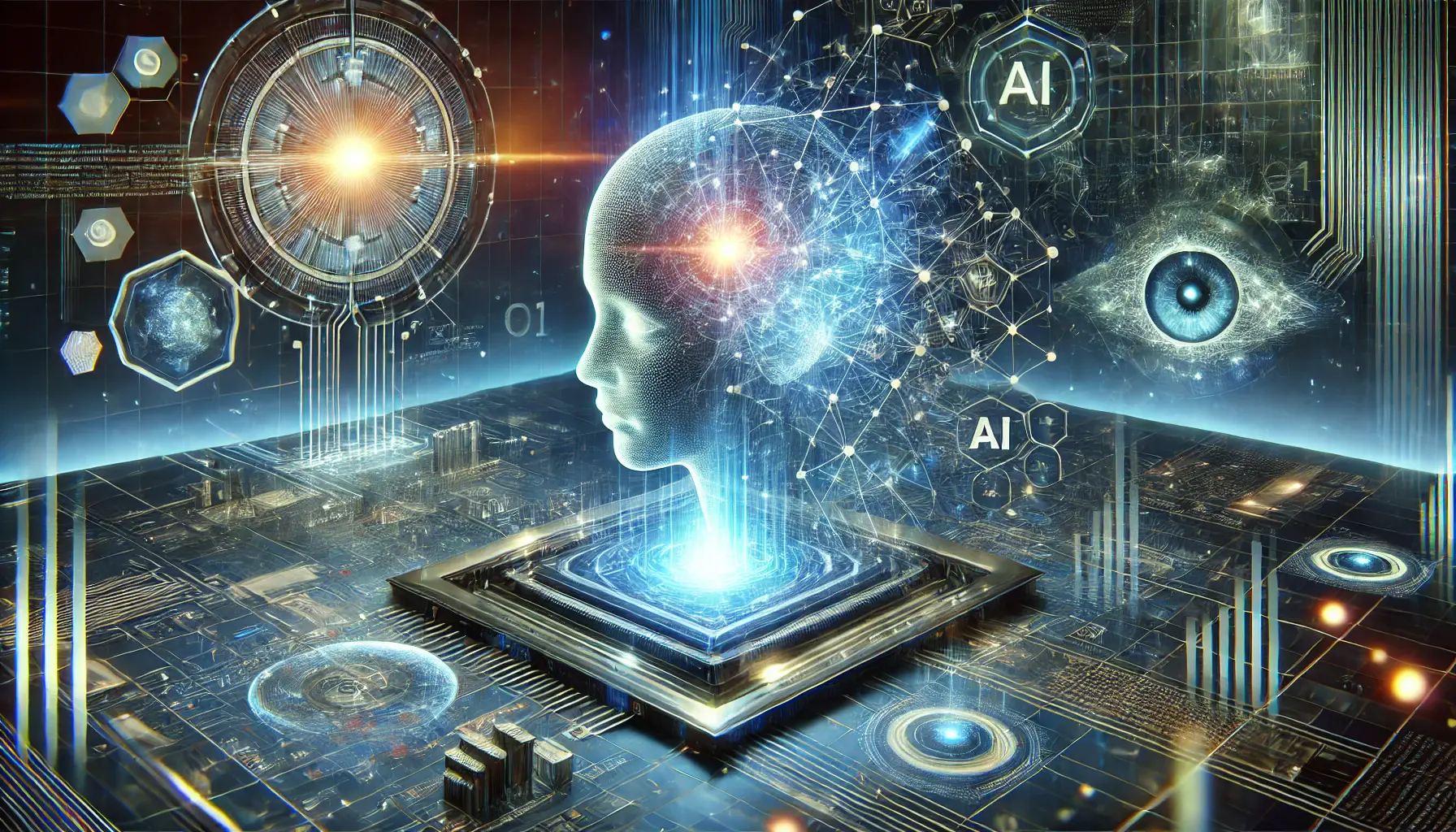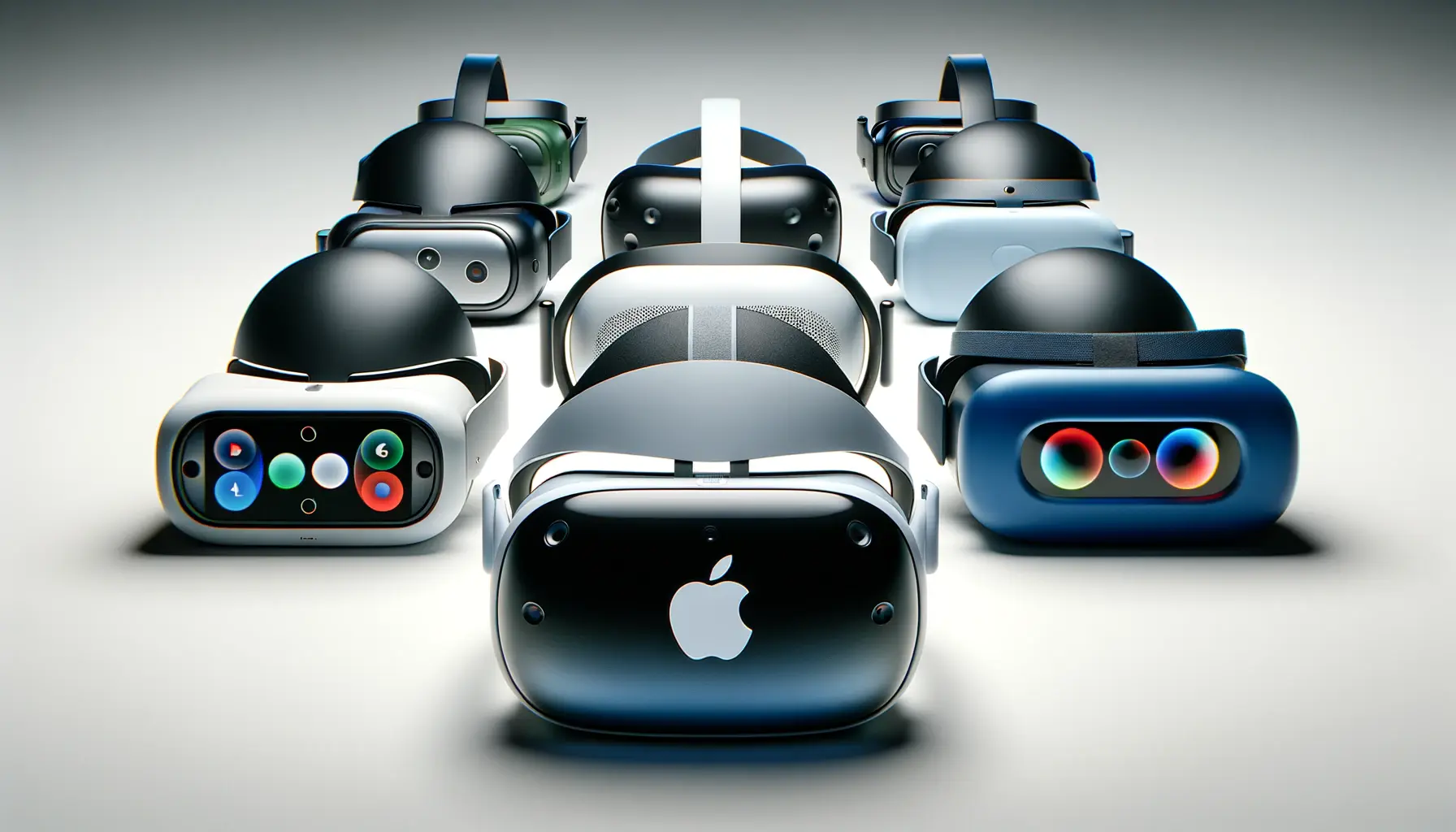In the rapidly evolving landscape of artificial intelligence, OpenAI’s Sora has emerged as a groundbreaking tool, setting new standards in the AI domain.
This article delves into a detailed comparison between Sora and its competitors, shedding light on the capabilities, innovations, and unique features that set Sora apart.
As we navigate through this comparative analysis, we aim to provide insights into how Sora stands in the competitive arena of AI technologies, particularly focusing on its application, efficiency, and the broader implications for users and industries alike.
The significance of Sora in the AI ecosystem cannot be overstated.
With its advanced algorithms and cutting-edge technology, Sora represents a leap forward in how artificial intelligence can be leveraged for a wide range of applications.
From enhancing productivity tools to revolutionizing content creation, Sora’s impact is far-reaching.
This article aims to explore the nuances of Sora’s technology, compare it with its competitors, and highlight the potential it holds for shaping the future of AI.
- Introduction to OpenAI’s Sora
- Comparative Analysis with Competitors
- Impact on Industries and Creative Fields
- Challenges and Ethical Considerations
- Future Directions and Developments
- Strategies for Implementation and Adoption
- Maximizing Sora’s Potential for Innovation
- Embracing the Future with Sora: A Path Forward
- Sora OpenAI: Frequently Asked Questions
Introduction to OpenAI’s Sora
OpenAI’s Sora, a state-of-the-art AI model, has been designed with the vision of pushing the boundaries of machine learning and artificial intelligence.
Sora’s architecture allows it to perform a wide array of tasks, from generating high-fidelity text-to-video content to simulating complex virtual environments.
This versatility makes Sora a formidable player in the AI field, offering solutions that were once considered beyond the reach of current technologies.
One of the key strengths of Sora lies in its ability to understand and interpret human language at an unprecedented level of complexity.
This capability enables Sora to generate content that is not only relevant but also contextually rich, providing users with outputs that closely mimic human creativity and insight.
The implications of this are vast, spanning various sectors including education, entertainment, and beyond.
Technological Advancements and Capabilities
Sora’s technological framework is built on a foundation of advanced machine learning algorithms, including deep learning and neural networks.
These technologies empower Sora to process and analyze large datasets, learn from them, and make predictions or generate content based on the learned information.
What sets Sora apart is its ability to do so with remarkable accuracy and speed, making it a valuable tool for professionals and creatives alike.
Moreover, Sora’s integration of text-to-video capabilities showcases its unique position in the market.
By converting textual descriptions into high-quality video content, Sora opens up new avenues for content creation that were previously unattainable.
This feature alone places Sora at the forefront of AI-driven innovation, challenging competitors to match its level of sophistication and utility.
Sora’s integration of advanced machine learning algorithms and text-to-video capabilities sets it apart in the AI landscape, offering unprecedented levels of accuracy, speed, and creativity.
Comparative Analysis with Competitors
When comparing Sora to its competitors, it’s essential to evaluate the landscape of AI technologies where several key players have made significant strides.
This comparative analysis focuses on specific areas where Sora and its competitors diverge, offering a clearer understanding of its unique value proposition.
Competitors in the AI space, such as Google’s DeepMind and IBM Watson, have their strengths, particularly in data analytics, natural language processing, and specific industry applications.
However, Sora distinguishes itself through its specialized capabilities and the breadth of its applications, particularly in creative and simulation tasks.
Key Differentiators of Sora
- Innovative Text-to-Video Conversion: Sora’s ability to transform textual descriptions into dynamic video content is unparalleled. This feature not only enhances creative projects but also has practical applications in education and training, where visual content can significantly improve learning outcomes.
- Advanced Simulation Capabilities: Unlike many competitors, Sora can simulate complex virtual environments, making it an invaluable tool for game development, virtual reality experiences, and even urban planning.
- High-Quality Content Generation: The fidelity and quality of content generated by Sora are superior, thanks to its sophisticated algorithms. This ensures that outputs are not only realistic but also contextually relevant.
Competitors’ Strengths
- DeepMind’s AI Research: DeepMind excels in fundamental AI research, contributing to advancements in machine learning techniques and algorithms. Their work in AI ethics and safety is also noteworthy.
- IBM Watson’s Industry Applications: Watson is renowned for its deep industry knowledge and applications, particularly in healthcare, where it aids in diagnosis and treatment planning.
- Adobe’s Creative Tools: Adobe offers a suite of creative tools enhanced by AI, focusing on design, photography, and digital art. While not a direct competitor in all areas, Adobe’s AI integration in creative software is significant.
While Sora excels in creative and simulation tasks, competitors like DeepMind, IBM Watson, and Adobe have their strengths in fundamental AI research, industry-specific applications, and creative software, respectively.
Impact on Industries and Creative Fields
The introduction of Sora into the AI landscape has far-reaching implications across various industries and creative fields.
Its advanced capabilities not only streamline workflows but also open up new possibilities for innovation and creativity.
This section explores the transformative impact of Sora on different sectors, highlighting its potential to revolutionize how we approach tasks and projects.
Content Creation and Media
In the realm of content creation and media, Sora’s text-to-video technology offers a groundbreaking tool for filmmakers, marketers, and content creators.
By enabling the generation of high-quality video content from textual descriptions, Sora significantly reduces production times and costs, making video content more accessible to a broader audience.
This capability is particularly beneficial for small businesses and independent creators who may lack the resources for traditional video production.
Education and Training
Sora’s impact extends to the educational sector, where its simulation capabilities can create immersive learning experiences.
By generating realistic virtual environments, Sora enhances the effectiveness of educational content, making complex concepts easier to understand and retain.
This has profound implications for online learning, vocational training, and simulation-based education, offering students and professionals a more engaging and interactive way to acquire knowledge and skills.
Game Development and Virtual Reality
- Enhanced Game Environments: Sora’s ability to simulate detailed and dynamic environments can elevate the visual quality and immersion of video games, providing developers with powerful tools to create more engaging and realistic game worlds.
- Virtual Reality Experiences: In virtual reality, Sora’s simulation capabilities can be leveraged to create lifelike experiences, from virtual tours to training simulations, offering users a level of realism previously unattainable.
Sora’s transformative impact on industries such as content creation, education, and game development showcases its potential to revolutionize traditional workflows and introduce new paradigms of creativity and innovation.
Challenges and Ethical Considerations
While Sora presents numerous opportunities for innovation and creativity, its deployment is not without challenges and ethical considerations.
As with any advanced AI technology, the implications of its use extend beyond technical capabilities, touching on issues of privacy, security, and societal impact.
This section delves into the critical challenges and ethical dilemmas posed by Sora, emphasizing the need for responsible development and use.
Data Privacy and Security
The ability of Sora to generate realistic content based on extensive data analysis raises significant concerns regarding data privacy and security.
Ensuring that the data used to train and operate Sora is obtained and managed ethically is paramount.
Moreover, safeguarding the generated content against misuse requires robust security measures, highlighting the importance of transparency and accountability in Sora’s development and deployment processes.
Content Authenticity and Misinformation
One of the most pressing ethical issues surrounding Sora is the potential for creating hyper-realistic content that blurs the line between reality and simulation.
This capability, while innovative, poses risks of misinformation and the spread of fake content, challenging the integrity of information and media.
Addressing these concerns necessitates the development of verification tools and ethical guidelines to ensure that Sora’s capabilities are used for constructive purposes.
Societal Impact and Job Displacement
- Impact on Creative Industries: The automation of content creation processes through Sora could lead to concerns about the devaluation of human creativity and potential job displacement in creative fields. Balancing technological advancement with the preservation of creative professions is crucial.
- Accessibility and Digital Divide: While Sora democratizes access to advanced content creation tools, it also risks exacerbating the digital divide. Ensuring equitable access to AI technologies like Sora is essential for preventing the widening of socioeconomic disparities.
Navigating the challenges and ethical considerations associated with Sora requires a concerted effort from developers, policymakers, and users to foster an environment of responsible AI use, prioritizing privacy, security, and societal well-being.
Future Directions and Developments
The advent of Sora marks a significant milestone in the field of artificial intelligence, but it also sets the stage for future innovations and developments.
As technology continues to evolve, the potential applications and improvements of Sora are vast, promising even more sophisticated capabilities and broader impacts across various sectors.
This section explores the anticipated future directions for Sora and its role in shaping the next generation of AI technologies.
Enhancements in AI Models
Future iterations of Sora are expected to feature enhancements in accuracy, speed, and versatility.
By incorporating feedback from users and advancements in machine learning algorithms, developers can refine Sora’s capabilities, making it more powerful and efficient.
This continuous improvement cycle will not only enhance Sora’s performance but also expand its applicability to new domains and challenges.
Integration with Emerging Technologies
The integration of Sora with other emerging technologies, such as augmented reality (AR), virtual reality (VR), and the Internet of Things (IoT), holds the potential to create unprecedented experiences and applications.
From immersive educational content to interactive entertainment and beyond, the synergy between Sora and these technologies could redefine our interaction with digital content and the physical world.
Addressing Societal Challenges
- Climate Change and Environmental Modeling: Sora’s simulation capabilities could be leveraged to model complex environmental systems, aiding in climate change research and the development of sustainable solutions.
- Healthcare and Medical Training: By generating realistic simulations, Sora can enhance medical training and patient education, improving healthcare outcomes through innovative teaching and learning tools.
The future of Sora lies in its ability to not only advance technologically but also to address pressing societal challenges, demonstrating the transformative potential of AI to contribute positively to global issues.
Strategies for Implementation and Adoption
The successful implementation and widespread adoption of Sora hinge on strategic planning and execution.
As organizations and individuals contemplate integrating Sora into their workflows, understanding the best practices for deployment becomes crucial.
This section outlines key strategies for effectively implementing and adopting Sora, ensuring that users can fully leverage its capabilities to achieve their objectives.
Identifying Use Cases and Applications
One of the first steps in adopting Sora is to identify specific use cases and applications where its capabilities can provide the most value.
Organizations should conduct a thorough analysis of their operations, content creation needs, and potential areas for innovation to pinpoint where Sora can make a significant impact.
By aligning Sora’s strengths with strategic objectives, users can maximize its benefits and drive meaningful change.
Training and Skill Development
To harness the full potential of Sora, investing in training and skill development for users is essential.
This involves not only familiarizing users with Sora’s interface and features but also fostering an understanding of AI principles and best practices.
Providing resources and support for continuous learning can empower users to explore creative applications of Sora, enhancing their productivity and the quality of their work.
Collaboration and Community Engagement
- Building a Community of Practice: Encouraging collaboration among Sora users can foster a vibrant community of practice. Sharing experiences, challenges, and successes can lead to the discovery of innovative uses and collaborative problem-solving.
- Engaging with Industry Partners: Forming partnerships with industry stakeholders can facilitate the integration of Sora into professional workflows. Collaborating with technology providers, educational institutions, and creative agencies can accelerate adoption and drive innovation.
Effective implementation and adoption of Sora require a strategic approach, focusing on identifying use cases, investing in training, and fostering collaboration. By embracing these strategies, users can unlock the transformative potential of Sora and drive forward the future of AI-driven content creation and simulation.
Maximizing Sora’s Potential for Innovation
The journey of integrating Sora into various domains is not just about leveraging a new tool; it’s about unlocking a new realm of possibilities for innovation and creativity.
As we look towards maximizing Sora’s potential, it becomes imperative to approach its adoption with a mindset geared towards exploration and experimentation.
This final section highlights key considerations for pushing the boundaries of what’s possible with Sora, ensuring that its capabilities are used to foster innovation and drive progress.
Encouraging Experimentation and Creativity
At the heart of maximizing Sora’s potential lies the encouragement of experimentation and creativity among its users.
Individuals and organizations should be motivated to explore the full range of Sora’s capabilities, testing its limits and applying it in unconventional ways.
By fostering an environment where creative risks are celebrated, the potential for groundbreaking applications of Sora can be realized, leading to novel solutions and advancements.
Adapting to Evolving Technological Landscapes
The technological landscape is in constant flux, with new advancements and challenges emerging regularly.
To fully harness Sora’s potential, users must remain adaptable, integrating Sora with other cutting-edge technologies and methodologies.
This adaptability not only ensures that Sora remains relevant but also that its users are at the forefront of technological innovation, ready to leverage new opportunities as they arise.
Leveraging Cross-Disciplinary Approaches
- Combining Expertise: The intersection of diverse fields of expertise can unlock new avenues for applying Sora. By bringing together professionals from various disciplines, such as art, science, and technology, the collaborative efforts can yield innovative applications that transcend traditional boundaries.
- Addressing Complex Challenges: Sora’s capabilities can be directed towards solving complex global challenges. From environmental conservation to healthcare, leveraging Sora in cross-disciplinary projects can contribute to meaningful societal impacts.
Limiting Sora’s application to conventional domains or existing paradigms can hinder its potential for innovation. Embracing experimentation, adaptability, and cross-disciplinary collaboration is key to unlocking the full spectrum of possibilities that Sora offers.
Embracing the Future with Sora: A Path Forward
The exploration of Sora and its comparison with competitors reveals a landscape ripe with potential for transformative change across various sectors.
As we stand on the brink of this technological evolution, it becomes clear that Sora is not just another tool in the AI arsenal but a beacon of innovation, guiding the way towards a future where the boundaries between the digital and the physical blur.
This conclusion aims to weave together the insights gained from our comprehensive analysis, highlighting the path forward with Sora at the helm.
Unlocking New Realms of Creativity and Efficiency
The journey through Sora’s capabilities and its impact on industries and creative fields underscores the vast potential it holds for revolutionizing content creation, education, and beyond.
Sora’s unique ability to generate high-fidelity, contextually rich content from textual descriptions opens up new realms of creativity and efficiency, enabling users to bring their visions to life with unprecedented ease and speed.
As we look to the future, the continued enhancement and adoption of Sora promise to further democratize content creation, making it accessible to a wider audience and fostering a new era of innovation.
Navigating Challenges with Ethical Foresight
However, the path forward is not without its challenges.
The ethical considerations surrounding data privacy, content authenticity, and the societal impact of Sora highlight the need for a balanced approach to its development and use.
As we embrace the possibilities that Sora offers, it is imperative that we navigate these challenges with ethical foresight, ensuring that the benefits of this technology are realized without compromising on the values of privacy, security, and equity.
The development of robust frameworks for ethical AI use and the active engagement of stakeholders in these discussions will be crucial in shaping a future where Sora contributes positively to society.
Charting a Course for Collaborative Innovation
- The integration of Sora with emerging technologies and its application in addressing global challenges underscore the importance of collaborative innovation. By fostering cross-disciplinary partnerships and encouraging experimentation, we can unlock Sora’s full potential and apply it in ways that drive progress and address pressing societal needs.
- Encouraging a culture of continuous learning and adaptation among Sora users will be key to keeping pace with the evolving technological landscape. As Sora continues to develop, staying informed and agile will enable users to leverage new capabilities and integrate Sora into their workflows effectively.
In conclusion, Sora stands as a testament to the power of artificial intelligence to transform our world.
By comparing Sora to its competitors, we gain a deeper understanding of its unique position in the AI landscape and the unparalleled opportunities it offers for innovation and creativity.
As we move forward, the thoughtful implementation, ethical use, and collaborative exploration of Sora will be instrumental in realizing its potential to shape the future of AI and beyond.
The journey with Sora is just beginning, and the path ahead is filled with possibilities waiting to be discovered.
Sora OpenAI: Frequently Asked Questions
Explore the most common inquiries about OpenAI’s Sora, its capabilities, availability, and potential applications.
Sora is a cutting-edge AI model by OpenAI, specializing in generating realistic and imaginative video scenes from text instructions.
No, Sora is not yet widely available to the public. OpenAI is currently conducting safety checks and gathering feedback.
Yes, Sora can generate high-quality videos in various aspect ratios and resolutions, catering to diverse content creation needs.
Sora stands out for its text-to-video synthesis, offering unparalleled realism and creativity in content generation.
Content creation, education, game development, and virtual reality are among the industries that can greatly benefit from Sora.
Sora empowers creators with new tools for innovation, potentially transforming traditional creative workflows and outputs.
Concerns include data privacy, content authenticity, and the potential for misinformation, necessitating responsible use guidelines.
Following OpenAI’s official communications and participating in community forums are good ways to stay informed about Sora.











